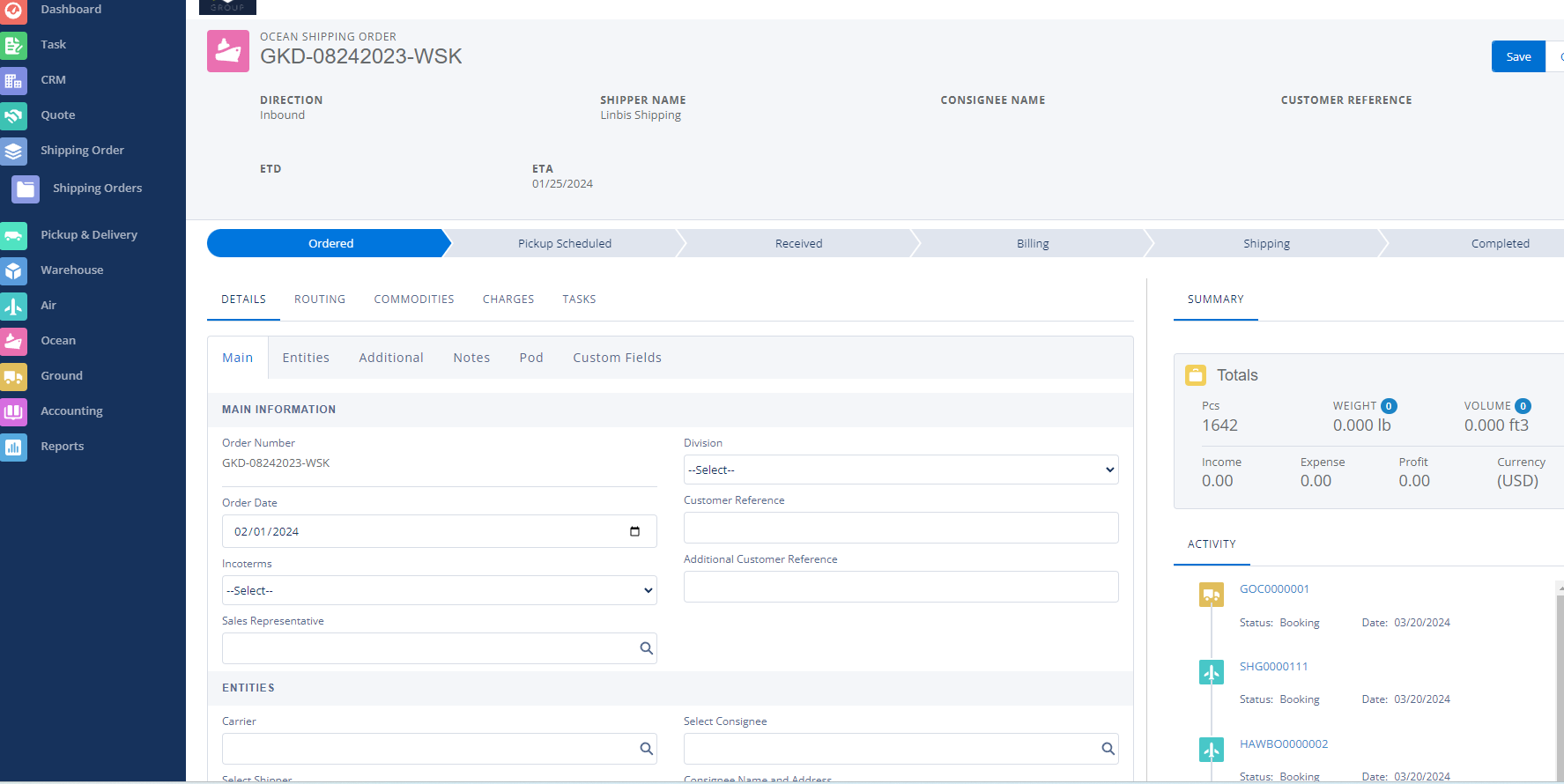What is a Packing Slip?
A packing slip, also known as a waybill, is a document that accompanies a shipment of goods. It provides an itemized list of the contents of the package, including the quantities and descriptions of each item. The packaging slip ensures that the recipient can verify the contents of the shipment against the order placed and check for any discrepancies or missing items.
Packing slips are essential in logistics and supply chain management as they facilitate accurate and efficient order fulfillment. They serve as a reference for warehouse staff, carriers, and recipients, ensuring that all parties are aware of the shipment’s details.



What is the Difference Between a Packing Slip and an Invoice?
While both packing slips and invoices are important documents in the shipping process, they serve different purposes:
- Purpose: Provides a detailed list of the items included in a shipment.
- Recipient: Accompanies the shipment and is intended for the recipient to verify the contents.
- Details: Includes item descriptions, quantities, and sometimes the weight of the items.
- Payment Information: Does not typically include payment or pricing information.
- Purpose: Requests payment for goods or services provided.
- Recipient: Sent to the buyer or accounts payable department for payment processing.
- Details: Includes item descriptions, quantities, prices, payment terms, and total amount due.
- Payment Information: Contains detailed pricing and payment instructions.
5 Reasons Why Packing Slips are Important for E-commerce Businesses
Packing slips play a crucial role in the e-commerce supply chain. Here are five reasons why they are important:
1. Verification of Shipment Contents
packaging slip allow recipients to verify that the items received match the items ordered. This helps identify any discrepancies, such as missing or incorrect items, and facilitates prompt resolution.
2. Enhanced Customer Experience
Including a packing slip in the shipment provides transparency and reassurance to customers. It shows that the business is organized and committed to accurate order fulfillment, enhancing the overall customer experience.
3. Streamlined Returns and Exchanges
Packing slips provide essential information for processing returns and exchanges. Customers can use the packing slip to reference order details and item descriptions, making it easier for them to communicate with customer service and initiate returns or exchanges.
4. Efficient Inventory Management
Packing slips help warehouse staff ensure that the correct items are picked and packed for each order. This reduces errors and improves inventory accuracy, leading to more efficient inventory management and reduced operational costs.
5. Compliance and Record-Keeping
Packing slips serve as documentation for shipments, helping businesses maintain accurate records for compliance and auditing purposes. They provide a paper trail that can be referenced in case of disputes or discrepancies
What Should a Packing Slip Include?
A comprehensive packing slip should include the following information:
- Sender: Company name, address, and contact information.
- Recipient: Customer name, shipping address, and contact information.
- Order Number: Unique identifier for the order.
- Order Date: Date when the order was placed.
- Item Descriptions: Detailed descriptions of each item.
- Quantities: Number of units for each item.
- SKUs or Part Numbers: Stock Keeping Units or part numbers for inventory tracking.
- Handling Instructions: Any special handling or delivery instructions.
- Logo and Branding: Company logo and branding elements to reinforce brand identity.
Other Considerations for Packing Slips and Packing Lists
1. Digital Packing Slips
In addition to physical packing slips, consider providing digital packaging slips accessible through email or online portals. This offers customers an alternative way to verify order contents and can be useful for record-keeping.
2. Customization
Customize packaging slip to align with your brand identity. Use your company logo, colors, and fonts to create a professional and cohesive look that reinforces your brand.
3. Multi-Box Shipments
For orders shipped in multiple boxes, ensure each box includes a packing slip with details specific to the contents of that box. This helps recipients verify that all items have been received correctly.
4. Environmental Considerations
Consider using eco-friendly paper and printing methods for packing slips. Reducing the environmental impact of your shipping process can enhance your brand’s sustainability efforts.
How Linbis Automatically Creates Packing Lists

Linbis offers advanced shipping and warehouse management solutions that automate the creation and printing of packing slips. Here’s how Linbis streamlines this process:
1. Automatic Packing List Creation
When a sales order is created in Linbis, the system automatically generates a packing slip. This packing slip includes all the necessary details such as item descriptions, quantities, order number, and special instructions. This automation ensures that all packing slips are accurate and consistent.
2. Seamless Integration with Warehouse Operations
Linbis integrates seamlessly with warehouse management systems, allowing warehouse staff to access and print packing slips directly from the system. As soon as the sales order is processed, the packing slip is available for printing, reducing delays and manual intervention.
3. Real-Time Updates
Linbis provides real-time updates on order statuses and pack slip generation. Warehouse staff can view the latest information on their dashboards, ensuring that they are always working with the most current data.
4. Customizable Templates
Linbis allows businesses to customize their packing slip templates to include branding elements, logos, and specific information relevant to their operations. This customization helps maintain a professional appearance and consistent branding across all documents.
5. Efficient Workflow
By automating the creation and printing of packing slips, Linbis streamlines the workflow in the warehouse. This automation reduces the time spent on manual tasks, minimizes errors, and enhances overall efficiency in order fulfillment.
Conclusion
Packing slips are a vital component of the shipping process, providing essential information for verifying shipment contents, streamlining returns, and enhancing customer satisfaction. By including detailed and accurate packing slips with every shipment, businesses can improve their order fulfillment processes and build stronger relationships with their customers.
Have Your Own Warehouse?
If you have your own warehouse, implementing best practices for packing slips can significantly improve your shipping operations. Use automation and warehouse management systems (WMS) to generate and manage cargo slips efficiently, ensuring accuracy and consistency in every shipment.
Packing Slip FAQs
1. What is a packing slip?
A pack slip is a document that accompanies a shipment of goods, listing the items included in the package, their descriptions, and quantities. It helps the recipient verify the contents of the shipment.
2. What is the difference between a packing slip and an invoice?
A packing slip provides a detailed list of the items included in a shipment, while an invoice is a document requesting payment for goods or services provided. The shipping slip does not include pricing information, whereas the invoice does.
3. Why are packing slips important for e-commerce businesses?
Packing slips are important for e-commerce businesses because they help verify shipment contents, enhance customer experience, streamline returns and exchanges, improve inventory management, and provide documentation for compliance and record-keeping.
4. What should a packing slip include?
A pack slip should include sender and recipient information, order details, an itemized list of contents, special instructions, and company branding.
5. How can I create a packing slip?
You can create a packing slip using templates or shipping management software. Ensure that the pack slip includes all necessary information and aligns with your brand identity. Consider automating the process to improve efficiency and accuracy.
